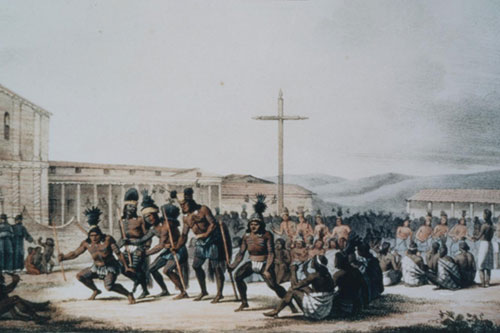Native American New Year Feasts – A Link to the Past
Native American New Year Feasts – A Link to the Past January 2023

It's January and the New Year celebrations are over. After years of COVID, it's nice to start returning to a semblance of normalcy. While most of the world celebrated the New Year on the night of December 31st, for the Native American tribes, the celebrations started earlier.
Whose Calendar?
Most of the world uses the Gregorian Calendar. It is a new one, introduced only in 1582. Calendars like the Korean or Hindu ones date back thousands of years before that time. The various Native American tribes that have lived on the American continent for many thousands of years may not have had a formal way of recording the passing of years, but they were aware of the passage of time and knew when the seasons changed and the weather turned different. They did this, not by an artificial time cycle, but by using the changing seasons themselves to indicate the passage of time and the arrival of a new year. They did this by starting a year at the time of harvest, at the time of the winter or summer solstice, or at other natural recurring indicators of the passage of time. Whenever the New Year is observed, for the Native American tribes, it is as much a way of honoring the past as it is of looking toward the future.
Food Is at the Heart of All Celebrations
Native American tribes have varied customs and traditions and that includes when a new year begins. While the actual date may vary, in general, the changing of the year is tied to the changing of the seasonsand timed with food surpluses. This is because, before the arrival of the European colonists, Native Americans lived lives that were closely intertwined with the land and the seasons. Having limited manufacturing (and no need for it),they depended on the land to provide them with food, water, shelter, clothing and other necessities of life. The relationship with the land was a symbiotic one. The land gave the people what they needed to live and prosper and in return, the people treated the landwith respect. A new year was a time to honor that land.
The tribes were aware of the solstices – the day which was the shortest and the one that was the longest. Because it was after the shortest day that the periods of sunlight kept increasing, that was, for many tribes, when a new cycle of life began. It was logical that this should be when the New Year started.
In California, tribes like the Muwekma Ohlone were spared the severe changes of season that tribes in other parts of the continent experienced. However, they knew that the increasing hours of daylight gave them more time to hunt, fish and gather food. It was a time to appreciate the renewal of the natural world and a time to start a new yearwith World Renewal Ceremonies usually held in August when there was a surplus of harvested foods.
For all the tribes, wherever they were, food and water were the most basic element of life and so it made sense to make food and potable waterthe centerof all celebrations, including that of the New Year. The way the New Year was celebrated and when it was observed may have differed from tribe to tribe, but what they all had in common was that it was a time to eat and gain the strength to live and prosper through another cycle of the seasons. During this period of time in California there were Trade Feasts, economic and military alliances, marriage arrangements, and at times commemorations for their recently departed tribal members through their Mourning or Cry Ceremonies.